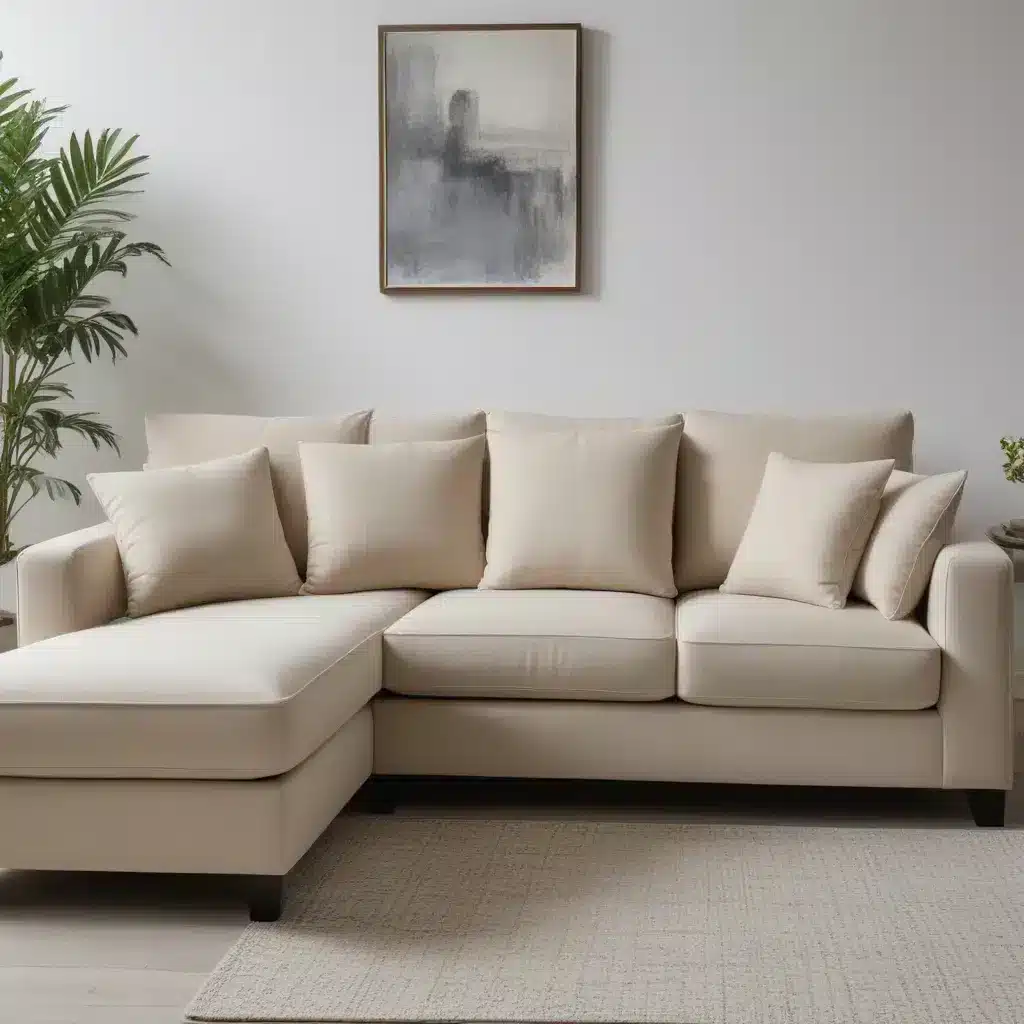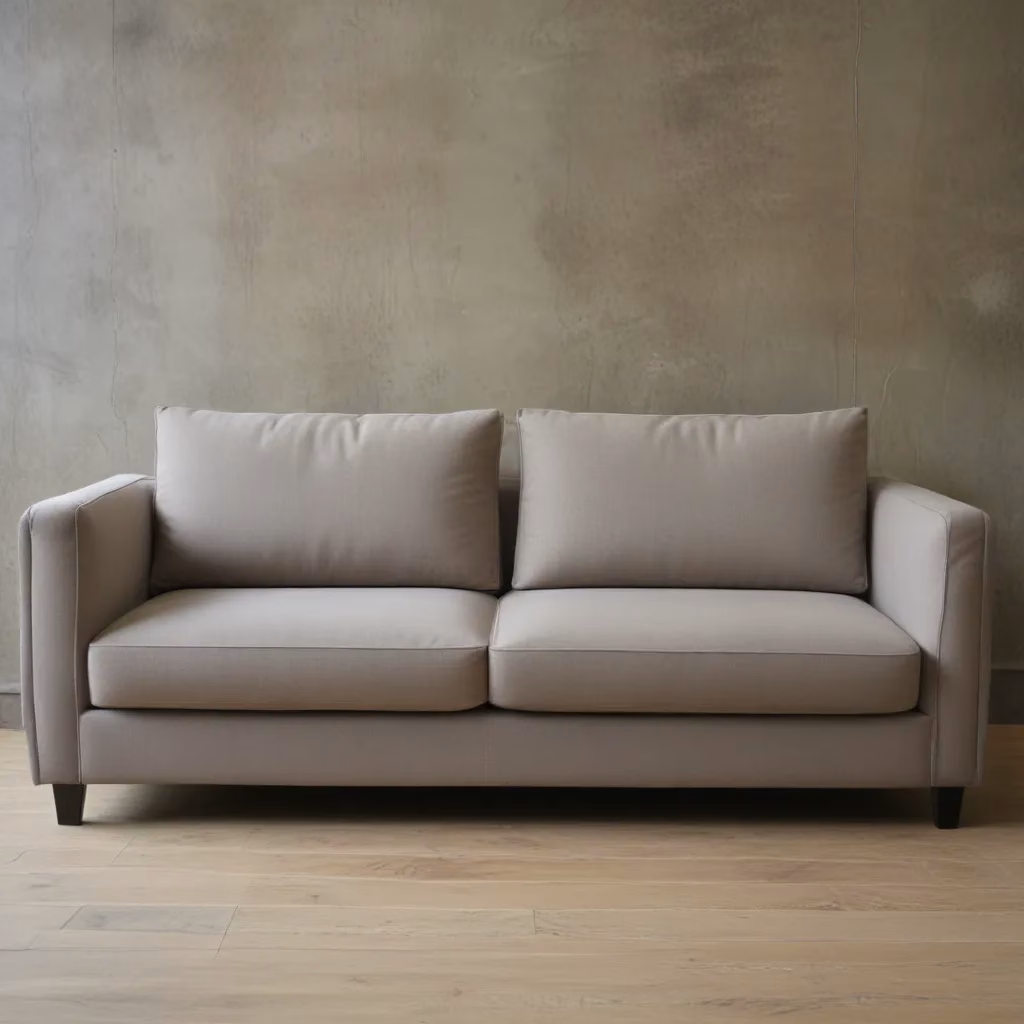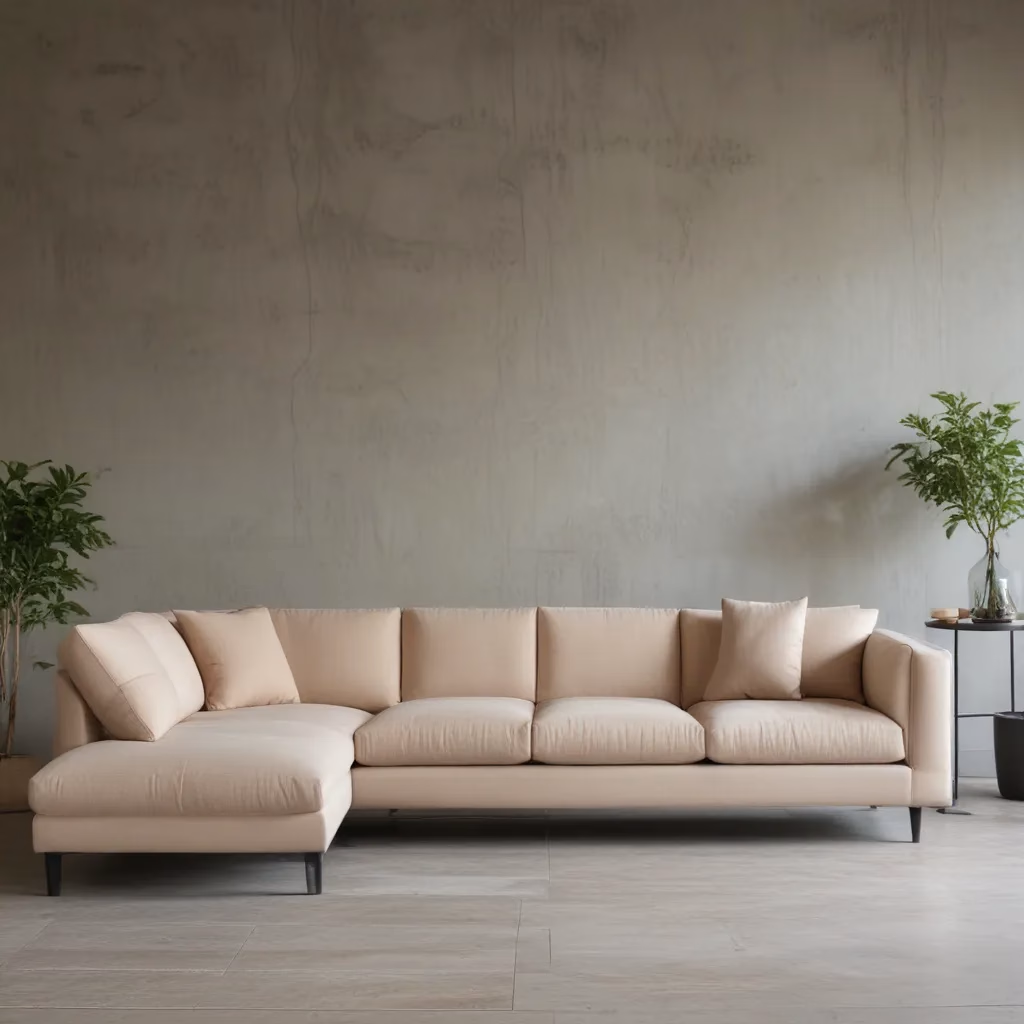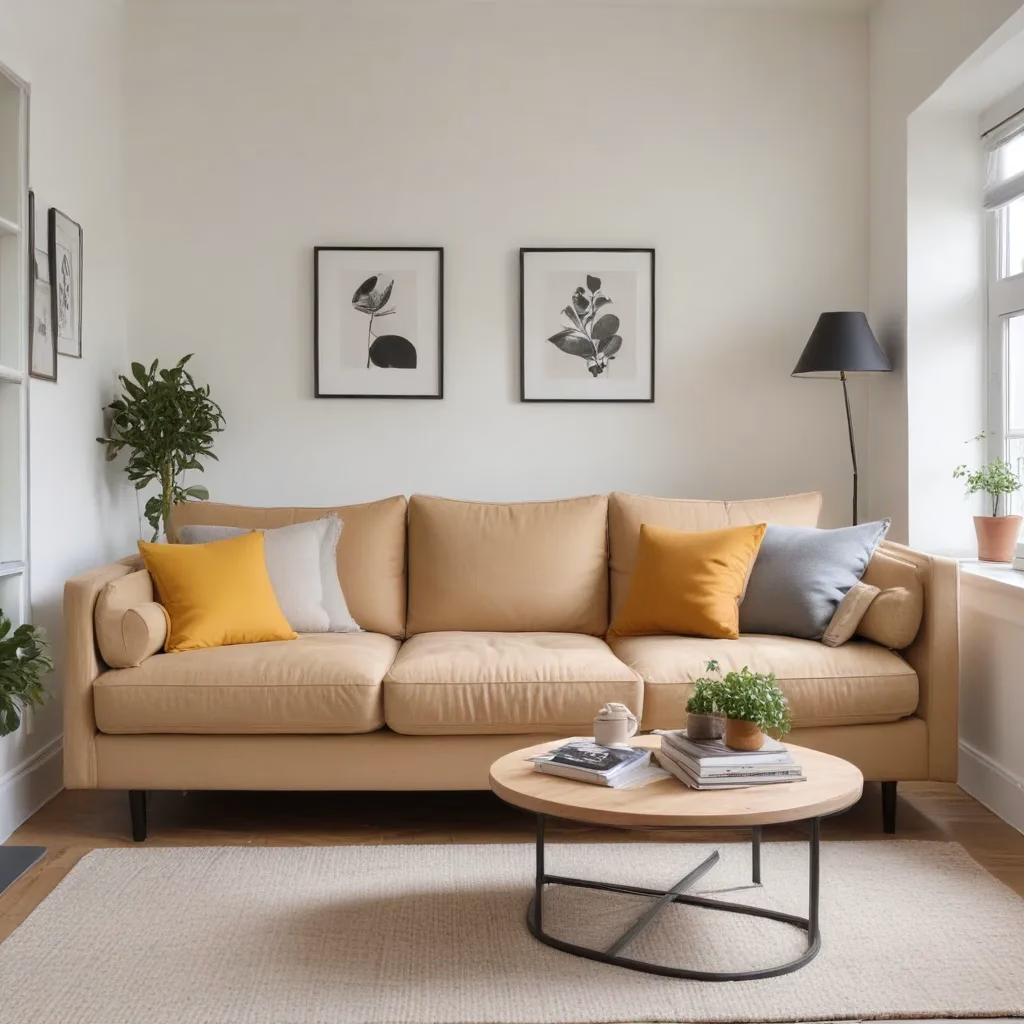The Sofa Size Dilemma
Let me tell you a little story about my sofa-shopping journey. As a self-proclaimed sofa connoisseur, I’ve had my fair share of ups and downs when it comes to finding the perfect couch. In my 18 years of independent living, I’ve gone through a staggering 16 sofas – yes, you read that right, 16! It’s been a rollercoaster ride, filled with both triumph and disappointment, as I’ve navigated the world of upholstery, trying to find my “sofamate.”
Over the years, I’ve made some rookie mistakes. I’ve fallen for cute but impractical sofas, colorful ones that were just too obnoxious to live with, and on more than one occasion, I’ve ended up with a piece that was way too big for the room it was supposed to occupy. Looking back, I can see how my lack of understanding when it came to sofa size and shape really held me back from creating the cozy, welcoming living spaces I so desperately craved.
But fear not, my fellow sofa-seekers, I’m here to share the wisdom I’ve gained through my many trials and tribulations. With the help of interior design experts Amanda Norcross and Scott Paterek, I’m going to walk you through the essential tips for choosing the ideal sofa size and shape for your home.
Finding the Perfect Fit
The first rule of sofa shopping, according to Norcross and Paterek, is to make sure the sofa fits the client – that’s you! They advise factoring in your height and personal seating preferences, whether you prefer a low, slouchy vibe or a more upright position.
Once you’ve got your own dimensions locked in, the next step is to consider the space. Aim for at least three feet of clearance around the sofa to allow for smooth traffic flow. As a general guideline, a 72-inch mid-sized sofa tends to work well in many living rooms, as Norcross and Paterek explain, “so many older homes have a 12-foot-wide living room.”
But don’t feel like you have to stick to a standard size – if your space allows, you can go bigger or smaller. The key is to strike the right balance between accommodating your seating needs and ensuring the sofa doesn’t overwhelm the room.
The Sofa Shape Equation
Shape is another crucial factor to consider when selecting the perfect sofa. According to Homes and Gardens, the shape of your sofa can have a significant impact on the overall feel of the room.
For example, if you have a room with low ceilings, opting for a sofa with a lower back can help keep the proportions in check and create the illusion of more space. Conversely, if you’re designing a cozy den or library-esque space, a taller-backed sofa can lend a sense of grandeur and sophistication, like stepping into a gentleman’s club.
Curved or angular sofa lines can also play a role in shaping the room’s ambiance. Hedayat of Jam By Hedayat explains, “We like to use sofas with curved details in rooms to break too much angularity and allow for some softness.” So if you’re looking to create a more relaxed, inviting vibe, a sofa with gentle curves might be the way to go.
Another shape-related consideration is the sofa’s arms. As Amanda Meade advises, “We consider the height of the arms and the reach to the side for side tables.” Bulky arms can often obstruct the flow of a room, so pay close attention to how the sofa’s silhouette will affect sight lines and the placement of other furnishings.
The Sectional Conundrum
Ah, the sectional sofa – a piece that has both intrigued and intimidated me over the years. While I’ve never quite taken the plunge and committed to one of these behemoths in my 16-sofa journey, I couldn’t help but ask the experts about the ins and outs of incorporating a sectional into a space.
Norcross and Paterek surprised me with their assessment, sharing that “often a sectional helps a smaller room.” They explain that a sectional following the perimeter of the room, paired with a single accent chair, can actually be a space-saving solution.
However, they caution that sectionals are “huge and heavy,” so careful planning is a must. When it comes to sizing, they recommend keeping the sectional’s dimensions to no more than half the length of the wall it’s parallel to, to maintain a balanced, uncluttered look.
And for those of you with open-concept living spaces, Emma Sims-Hilditch of Sims Hilditch suggests that a large L-shaped sectional can be a fantastic choice, as it helps to define the sitting area without overwhelming the overall flow.
Visualizing the Perfect Sofa
Now, I know what you’re thinking – how on earth are you supposed to know if a sofa will fit your space without actually bringing it home first? Well, fear not, my friends, the experts have some clever tricks up their sleeves.
Norcross and Paterek recommend using existing furniture to get a feel for the sofa’s placement. “There have been times we’ve lined up three dining chairs to show sofa placement,” they share. You can also use painter’s tape on the floor to outline the exact dimensions of the sofa you’re considering, allowing you to visualize how it will fit without committing to the real thing.
And before you even head to the store, make sure you have all the necessary information on hand, including the dimensions of your living room, the locations of your windows, and the height you’re aiming to match. This will ensure you’re making an informed decision and not accidentally bringing home a sofa that’s too big, too small, or just all-around wrong for your space.
Choosing the Perfect Sofa Color and Style
Last but not least, let’s talk about the aesthetic aspects of your sofa selection. While size and shape are undoubtedly the most crucial factors, the color and overall style of your new couch can also have a significant impact on the look and feel of your living space.
Caitlin Miller, a BIID registered interior designer, shares her approach: “For this space, I wanted to maximize seating without having a sofa that dominated the space. I ensured the sofa filled almost all of the back wall while leaving space for a floor lamp and side table – which is important to bring cosiness to the arrangement and provide a location for drinks or a book while snuggled up.”
She opted for a pale gray sofa, explaining that it “was a perfect color for this space to continue the light airy feel while contrasting with the rich warm woods in the floor and coffee table.” However, Emma Sims-Hilditch of Sims Hilditch suggests that for a den or relaxation-focused room, a bolder, more statement-making sofa color could be the way to go.
And when it comes to the overall style, you’ll want to consider how the sofa’s lines and silhouette will complement the other furnishings in the room. As Hedayat of Jam By Hedayat puts it, “We like to use sofas with curved details in rooms to break too much angularity and allow for some softness.”
So there you have it, folks – my hard-earned sofa shopping wisdom, straight from the mouths of design experts. Whether you’re in the market for a custom piece from Sofas Spectacular or hunting for a steal on Craigslist, these tips will help you navigate the world of upholstery with confidence and ease. Happy sofa shopping, and may you find your perfect “sofamate” on the first try!




